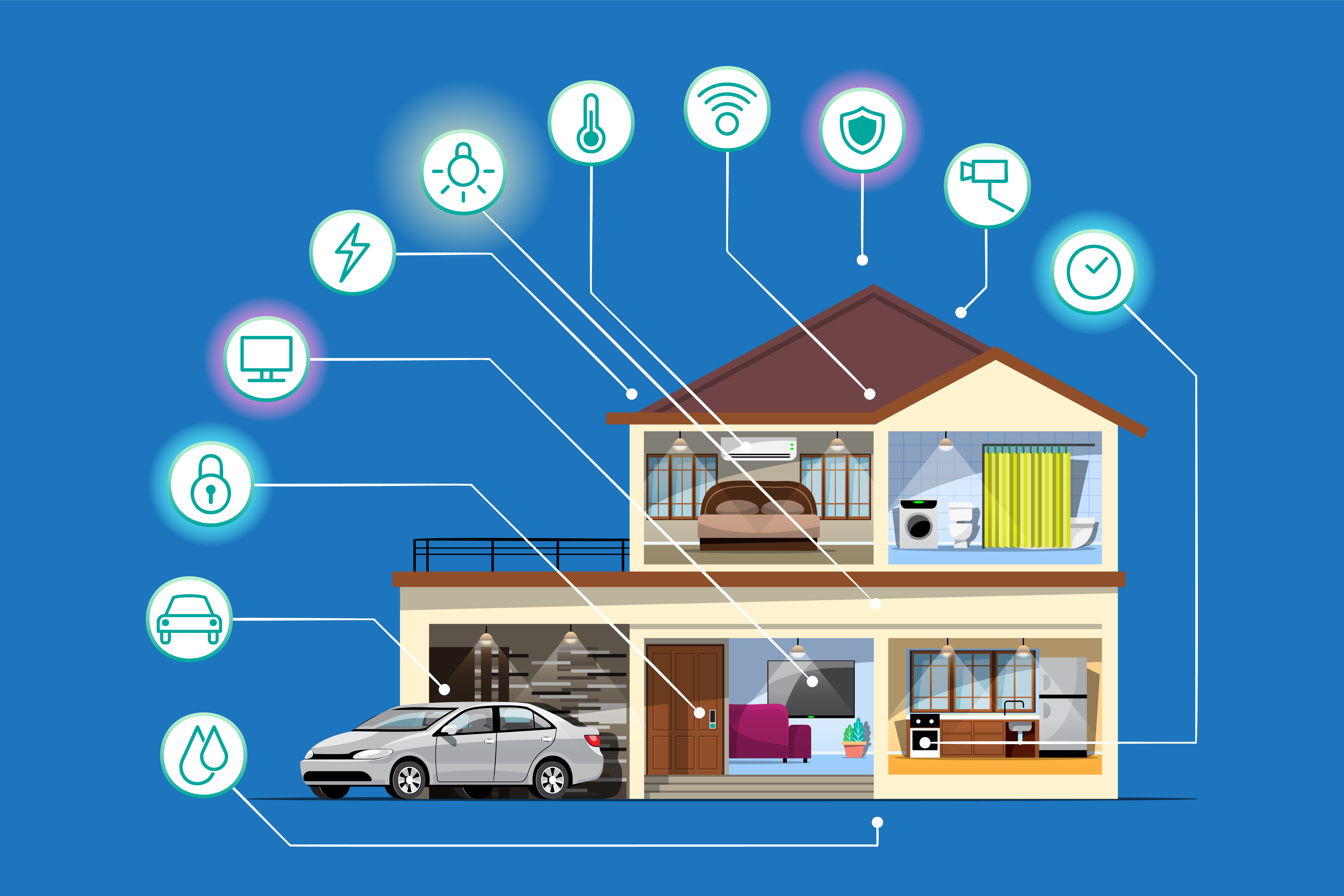IoT Analytics: Benefits, Challenges & Use Cases
-
May 29, 2022
-
8 min read

How is the world harnessing the power of connected devices to drive intelligent decision-making? Introducing IoT Analytics, where every gadget, sensor, and device provides a wealth of data ripe for analysis.
This blog is about the transformative benefits of IoT Analytics, explores the challenges it presents, and showcases diverse use cases across industries. From supply chain optimisation to better customer experiences, IoT Analytics is not just about connecting devices but about unlocking the strategic potential embedded within the data they generate. Let us get on this data-driven journey together.
Importance of IoT Analytics in Data-Driven Decisions
IoT Analytics serves as the backbone for these data-driven decisions, transforming raw data into actionable insights. Here is how it plays a crucial role:
- Higher Operational Efficiency: By analysing data from various sources, businesses can identify inefficiencies and optimise processes. This leads to significant cost savings and improved operational speed.
- Predictive Maintenance: IoT Analytics enables companies to predict equipment failures before they occur. Analysing historical and real-time data helps in scheduling maintenance only when needed.
- Real-time Decision Making: The ability to process and analyse data on the fly empowers businesses to make decisions in real-time.
- Improved Customer Experience: Data-driven insights help businesses understand customer behaviours and preferences.
- Risk Management: Analysing data collected from IoT devices helps in identifying potential risks and threats.
Through these points, it’s clear that IoT Analytics is indispensable in leveraging big data for strategic advantages.
What does IoT Analytics do?
IoT Analytics transforms the vast amounts of data generated by connected devices into valuable insights that drive smarter business decisions. Here’s a breakdown of its functions:
- Data Collection: It gathers information from various IoT sensors and devices spread across different locations for a comprehensive data pool for analysis.
- Data Integration: This step involves merging data from diverse sources, standardising it for consistency and usability across the board.
- Data Analysis: Advanced analytical tools and algorithms are applied to the integrated data to uncover patterns, trends, and correlations that might not be obvious otherwise.
- Insight Generation: From the analysis, IoT Analytics extracts actionable insights, such as identifying operational bottlenecks or predicting consumer trends, which can significantly impact business strategies.
- Automation and Control: Not only does it analyse data, but IoT Analytics can also trigger automated processes or control actions in real-time based on the insights derived.
Types of IoT Data Analytics Platforms
IoT data analytics platforms are essential tools for interpreting the vast amounts of data generated by connected devices. These platforms vary in complexity and functionality, catering to different analytical needs. Here are the major types:
- Descriptive Analytics Platforms: These platforms focus on what has happened by analysing historical data. They provide dashboards and visualisations that help in understanding patterns and trends over time.
- Examples: Tableau, Microsoft Power BI.
- Diagnostic Analytics Platforms: Diagnostic platforms dig deeper into data to understand the causes of events or behaviors. They often use techniques like drill-down, data discovery, correlations, and cause-effect analysis.
- Examples: QlikView, Splunk.
- Predictive Analytics Platforms: These platforms use statistical models and machine learning techniques to predict future events based on historical data.
- Examples: SAS Advanced Analytics, IBM Watson.
- Prescriptive Analytics Platforms: The most advanced type, prescriptive platforms, not only predict what will happen but also suggest actions to benefit from the predictions. They often incorporate machine learning, business rules, and algorithms.
- Examples: FICO Decision Management Suite, River Logic.
- Streaming Analytics Platforms: These platforms are designed to process large streams of real-time data. They are crucial for IoT environments where immediate action is required based on real-time data analysis.
- Examples: Apache Kafka, AWS Kinesis.
Each platform type offers unique capabilities that are critical in leveraging IoT data for strategic business actions and decisions.
Top Use Cases of IoT Analytics in Various Industries
Below are the top 6 use cases of IoT analytics in various industries:
1. Smart Cities and Traffic Management
IoT analytics significantly enhances urban mobility and safety through smart traffic management systems.
- Traffic Flow Optimisation: IoT sensors adjust traffic signals in real time and reduce congestion and improve flow.
- Safety Enhancements: Analyses accident data to improve road safety measures.
- Pollution Reduction: Monitors areas with high emissions and adjusts traffic flow to reduce pollution.
- Public Transport Management: Optimises bus and train schedules based on real-time passenger data.
2. Healthcare – Remote Patient Monitoring
IoT analytics in healthcare allows for full monitoring of patients remotely, enhancing treatment and reducing the need for hospital visits.
- Vital Signs Monitoring: Continuous tracking of patient vitals, providing data to healthcare providers in real time.
- Medication Adherence: Alerts and tracking to ensure patients follow their medication schedules.
- Emergency Response: Automated alerts to medical staff during a patient crisis.
- Patient Data Analysis: Deep analysis of patient data over time to improve treatment plans.
3. Retail – Enhanced Customer Experience
In retail, IoT analytics is used to personalise shopping experiences and streamline operations.
- Customer Behavior Insights: Tracks customer movements and interactions within stores to tailor marketing strategies.
- Inventory Management: Automatically updates inventory levels by tracking product movements.
- Supply Chain Optimisation: Monitors and optimises the supply chain from manufacturer to shelf.
- Energy Management: Reduces energy costs by monitoring and controlling lighting and HVAC based on real-time store conditions.
4. Manufacturing – Predictive Maintenance
IoT analytics optimises manufacturing processes through predictive maintenance and reduces downtime and extends equipment life.
- Equipment Health Monitoring: Continuously monitors the condition of machinery to predict failures.
- Downtime Reduction: Minimises unplanned downtime by scheduling maintenance only when needed.
- Efficiency Improvements: Identifies inefficiencies in machine performance and suggests optimisations.
- Cost Savings: Reduces costs associated with equipment failure and emergency repairs.
5. Energy – Smart Grids
Smart grids powered by IoT analytics help manage and distribute energy more efficiently across urban environments.
- Demand Response Management: Adjusts energy supply based on real-time demand insights.
- Outage Management: Quickly identifies and responds to power outages.
- Renewable Energy Integration: Smoothly integrates renewable energy sources into the grid.
- Consumer Usage Insights: Provides consumers with detailed usage data to promote energy conservation.
6. Supply Chain Management
IoT analytics transforms supply chains by providing transparency and boosting the efficiency of logistics operations.
- Real-Time Tracking: Monitors the location and condition of goods throughout the supply chain.
- Quality Assurance: Maintains the integrity of perishable goods by monitoring environmental conditions.
- Theft Prevention: Alerts to irregularities that could indicate theft or loss of goods.
- Route Optimisation: Analyses traffic and weather data to suggest optimal delivery routes.
How to Select the Right IoT Analytics Tool for Your Business Needs?
Selecting the right IoT analytics tool is crucial to harness the full potential of IoT data within your business. Here is how to make an informed choice:
- Define Your Needs: Start by clearly understanding what you want to achieve with IoT analytics. Identify specific business processes, objectives, or problems that you aim to address with the analytics tool.
- Consider Compatibility and Integration: Ensure the tool can integrate smoothly with your existing infrastructure. It should support your current hardware, software, and platforms without requiring extensive modifications.
- Scalability: Choose a platform that can scale as your business grows. Consider not only your current data volume but also future increases as your number of connected devices grows.
- Evaluate Features and Usability: Look for features that meet your specific needs, such as real-time analytics, machine learning capabilities, and advanced data processing options. Usability is also crucial—make sure the tool is easy to use and aligns with your team’s technical skills.
- Security: Opt for a platform that offers robust security features to protect your IoT data streams and stored data. This includes regular updates and security patches to guard against new vulnerabilities.
Why Choose Airtel’s IoT Connectivity Solutions?
As we have pointed out, the success of IoT analytics hinges on high-end and smooth connectivity. Airtel’s IoT Connectivity solutions are integral to realising the potential of IoT analytics, making them an excellent choice for your business. Here’s why:
- Reliable Connectivity: Airtel guarantees uninterrupted data flow, critical for the real-time analysis and decision-making processes described in the blog.
- Scalability: Easily scales to meet growing data demands, supporting everything from small sensors to large industrial machines.
- Advanced Technology: Utilises the latest technologies, including 5G, to provide fast and secure connections necessary for complex IoT analytics.
- Comprehensive Support: They offer end-to-end customer support for smooth integration and operation, which is essential for leveraging IoT analytics effectively.
Concluding Insights on IoT Analytics
IoT Analytics is essential for harnessing the data from connected devices to make well-informed decisions that can significantly improve operational efficiency, customer experiences, and risk management.
As we have explored the transformative power of IoT Analytics across various industries, Airtel’s IoT Connectivity solutions emerge as a vital partner. With reliable connectivity, scalability, advanced technology, and comprehensive support, Airtel empowers businesses to unlock the full potential of their IoT data. For smooth implementation and optimised performance of IoT Analytics, consider Airtel’s solutions as your connectivity backbone.
 Share
Share








